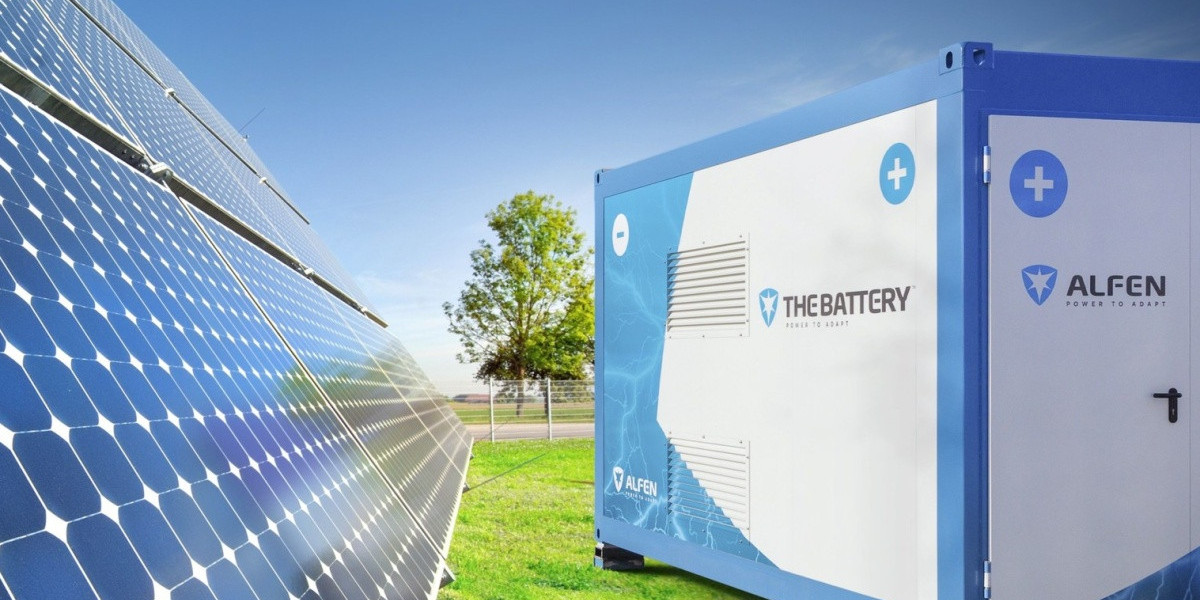The self-healing grid market is witnessing significant advancements, driven by the growing demand for more reliable, resilient, and sustainable energy systems. As global energy infrastructures continue to modernize, the self-healing grid has emerged as a vital technology for mitigating the impacts of power outages and ensuring a stable electricity supply. With a focus on automation, artificial intelligence (AI), and advanced communication systems, the self-healing grid market is poised for considerable expansion in the coming years. This article delves into the key factors influencing the growth of the self-healing grid market, explores the technologies powering these grids, and examines the challenges and opportunities that lie ahead.
Overview of the Self-Healing Grid Market
A self-healing grid is an advanced power distribution system that can automatically detect and isolate faults, reroute power, and restore service to affected areas without human intervention. These grids use real-time data, sensors, and automated controls to monitor the entire network and make dynamic adjustments as necessary. The goal is to minimize downtime and prevent large-scale power outages, which are often caused by weather events, equipment failures, or human error.
The self-healing grid market is a response to the growing need for smarter, more efficient energy management. As the global demand for electricity continues to rise, coupled with increasing concerns over energy security and environmental impact, the need for grids that can adapt and respond to disruptions in real-time has never been more critical. The deployment of self-healing grids offers several benefits, including reduced maintenance costs, enhanced reliability, and improved customer satisfaction.
Key Technologies Enabling Self-Healing Grids
The self-healing grid relies on a combination of advanced technologies to achieve its primary objective of reducing system downtime and improving grid resilience. These technologies include smart sensors, advanced communication networks, real-time data analytics, and automated control systems.
1. Smart Sensors and Monitoring Systems
Smart sensors are crucial for detecting faults and abnormalities in the power grid. These sensors, installed throughout the grid, continuously monitor voltage, current, and other electrical parameters. When a fault occurs, sensors send real-time data to control centers, where algorithms assess the situation and determine the best course of action to isolate the fault and restore power.
2. Communication Networks
For a self-healing grid to function effectively, reliable communication networks are essential. These networks enable seamless data exchange between various components of the grid, including sensors, control systems, and grid operators. High-speed, low-latency communication systems, such as fiber optics or 5G networks, ensure that the grid can make real-time decisions and implement corrective actions swiftly.
3. Automated Control Systems
Automated control systems are designed to execute the decisions made by grid management software. These systems can automatically reroute power, activate backup systems, and restore service to customers within minutes or even seconds of a fault occurring. The automation reduces the need for manual intervention and minimizes the impact of grid failures.
4. Artificial Intelligence and Machine Learning
Artificial intelligence (AI) and machine learning algorithms are increasingly being integrated into self-healing grids. These technologies help analyze massive amounts of real-time data to predict potential failures before they happen, enabling proactive maintenance. AI-driven predictive analytics can optimize grid performance, detect vulnerabilities, and improve decision-making in critical situations.
Market Drivers
Several key factors are driving the growth of the self-healing grid market. These drivers are linked to the increasing demand for smarter energy systems, rising concerns over climate change, and the need for improved grid reliability.
1. Rising Frequency of Power Outages
Power outages have become more frequent and severe due to extreme weather events, such as hurricanes, wildfires, and storms, which are exacerbated by climate change. These outages disrupt daily life, harm businesses, and cause economic losses. The ability of self-healing grids to minimize the duration and impact of such outages is a significant driver for their adoption.
2. Increasing Demand for Grid Reliability
As economies grow and the number of connected devices increases, there is a greater demand for continuous and uninterrupted power supply. Self-healing grids can enhance the overall reliability of power distribution systems, ensuring that electricity is available when needed most. This demand for reliability is especially important in critical sectors such as healthcare, manufacturing, and data centers, where even brief outages can lead to significant losses.
3. Government Support and Regulatory Initiatives
Governments around the world are increasingly supporting the development and deployment of smart grid technologies as part of their sustainability and energy security goals. Policies, regulations, and incentives that promote the modernization of energy infrastructure are playing a critical role in the expansion of the self-healing grid market. For example, the U.S. Department of Energy has invested heavily in smart grid research, while the European Union has supported various initiatives to integrate renewable energy sources into smart grids.
4. Integration of Renewable Energy Sources
As the share of renewable energy sources, such as wind and solar, increases in the energy mix, grids must be able to handle the variability and intermittency associated with these power sources. Self-healing grids can help manage fluctuations in energy supply and demand, ensuring that power is available even when renewable sources are not producing electricity at full capacity.
Market Challenges
While the self-healing grid market is poised for significant growth, there are several challenges that could slow down its widespread adoption.
1. High Initial Investment Costs
The implementation of self-healing grid systems requires substantial upfront investment in infrastructure, including sensors, communication networks, and control systems. For utilities and energy providers, this initial cost can be a significant barrier, particularly in regions where grid modernization is already a costly undertaking. However, the long-term benefits, such as reduced downtime and maintenance costs, often outweigh the initial investment.
2. Cybersecurity Concerns
With the increasing digitalization of the power grid, the threat of cyberattacks becomes a significant concern. Self-healing grids rely on extensive data exchange and automated control, making them vulnerable to hacking or other forms of cyber disruption. Ensuring robust cybersecurity measures and developing resilient systems to protect against these threats is crucial for the continued success of self-healing grids.
3. Integration with Existing Infrastructure
Integrating self-healing capabilities into existing grid infrastructure can be complex and challenging. Many older power grids were not designed with modern automation, sensors, and communication technologies in mind. Upgrading these legacy systems to support self-healing functionality requires careful planning and significant investments in retrofitting and technology integration.
Opportunities in the Self-Healing Grid Market
Despite these challenges, several opportunities exist for stakeholders in the self-healing grid market, including utilities, technology providers, and government agencies.
1. Emerging Markets
Emerging economies, particularly in Asia-Pacific and Africa, present significant growth opportunities for self-healing grids. These regions are undergoing rapid urbanization and industrialization, driving the need for more reliable and efficient energy systems. The deployment of self-healing grids in these markets can help improve grid resilience and facilitate the integration of renewable energy sources.
2. Energy Storage and Grid Resilience
The integration of energy storage systems, such as batteries, into self-healing grids presents another opportunity for market growth. Energy storage can help stabilize the grid during periods of high demand or when renewable sources are unavailable. Combining self-healing technology with energy storage systems can create more resilient grids that are better able to withstand disruptions and provide a continuous power supply.
3. Collaboration with Smart City Initiatives
As cities around the world become smarter and more connected, self-healing grids will play an essential role in ensuring the efficient and sustainable delivery of energy. Collaboration between utilities, technology developers, and smart city planners will be critical in integrating self-healing grids into urban infrastructure, supporting a more sustainable and resilient future.
Conclusion
The self-healing grid market is at the forefront of revolutionizing the way power is distributed and managed globally. As the demand for more reliable, resilient, and sustainable energy systems grows, self-healing grids offer a promising solution to address the challenges posed by outages, climate change, and increasing energy demands. By leveraging technologies like smart sensors, AI, and automated control systems, self-healing grids are transforming the energy landscape. While challenges related to cost, cybersecurity, and infrastructure integration remain, the opportunities for growth in emerging markets, energy storage, and smart city initiatives position the self-healing grid market for continued expansion and success in the coming years.
More Trending Reports
Self-Healing Grid Market Share








